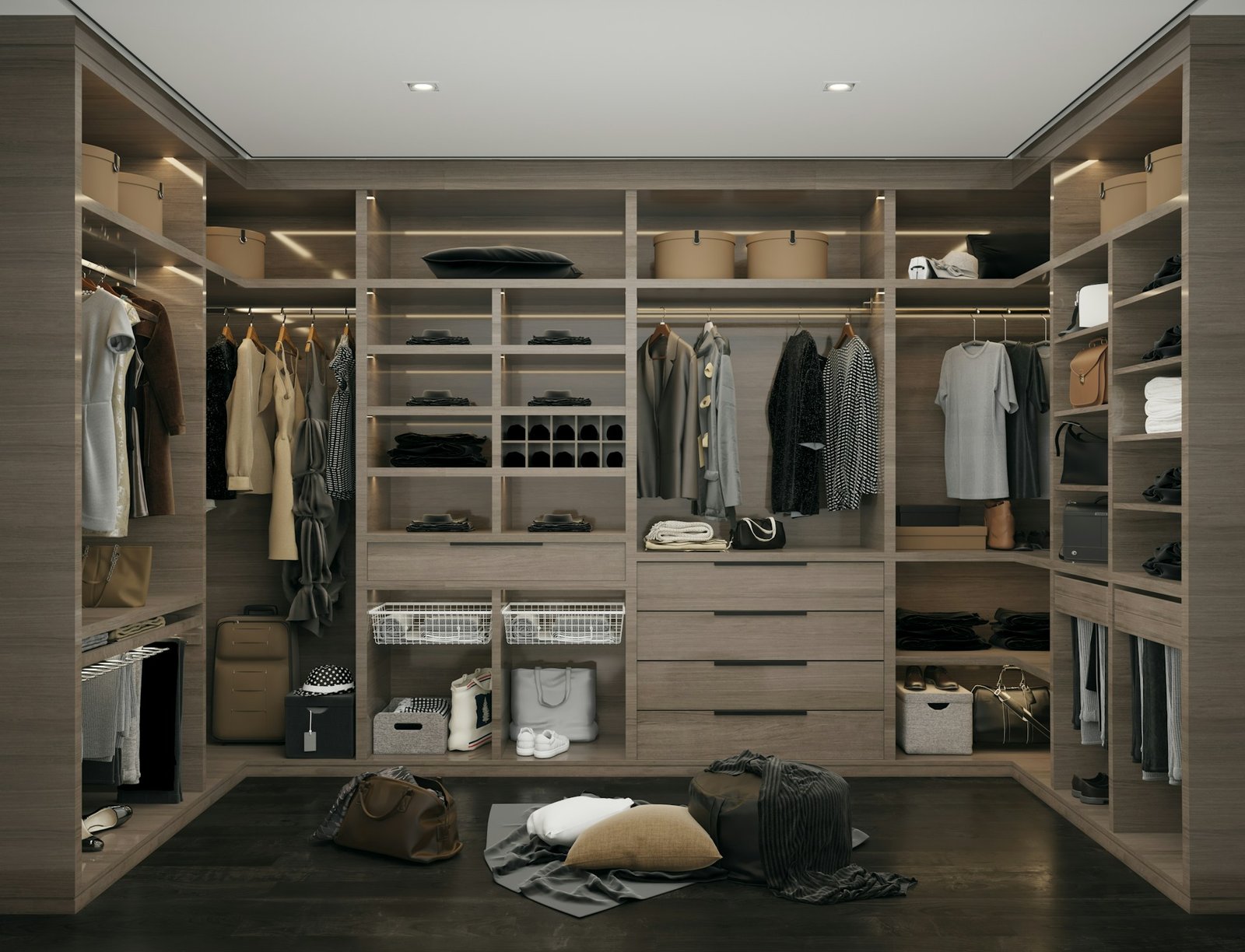The Foundation of Luxury: Understanding Your Space and Needs
After two decades of designing walk-in wardrobes for discerning clients, I’ve witnessed firsthand how a thoughtfully crafted wardrobe can transform not just a room, but an entire daily ritual. The walk-in wardrobe represents the ultimate marriage of function and luxury, yet so many homeowners approach the design process back to front, focusing on aesthetics before establishing their fundamental requirements.
The first conversation I have with any client centres around their lifestyle rather than their style preferences. Do they travel frequently, requiring dedicated luggage storage? Are they collectors of vintage handbags or fine watches that demand bespoke display solutions? I recall working with a tech entrepreneur who owned an impressive collection of limited-edition trainers. Rather than hiding them away, we created illuminated glass display cases that celebrated his passion whilst maintaining the sophisticated aesthetic his wife required. This initial assessment phase is crucial because retrofitting storage solutions into a beautifully finished space is both costly and often compromises the overall design integrity.
Mastering the Architecture of Storage
The most successful walk-in wardrobes I’ve designed follow what I call the ‘golden triangle’ principle: accessibility, visibility, and preservation. Every item should be within comfortable reach, clearly visible when needed, and stored in conditions that maintain its quality. This isn’t merely about cramming in as many shelves as possible, it’s about creating a choreographed storage ecosystem.
In my experience, clients often underestimate the importance of varying storage heights and depths. A common mistake is designing uniform shelving throughout, which creates visual monotony and inefficient space usage. Instead, I implement a rhythm of varying compartment sizes: deeper sections for bulky knitwear, medium-depth areas for folded shirts, and shallow zones for accessories. The key is creating distinct zones for different categories whilst maintaining visual flow. I particularly favour incorporating a central island when space permits, as it provides additional surface area for laying out outfits whilst housing drawers for intimate apparel and smaller accessories. The island also serves as a natural focal point, anchoring the room’s design and creating that essential sense of luxury and grandeur.
Illumination: The Secret to Luxury Aesthetics
Lighting transforms a functional space into a luxury experience, yet it’s the element most frequently overlooked in walk-in wardrobe design. Natural light is ideal when available, but most wardrobes rely entirely on artificial illumination. I’ve learned that layered lighting is non-negotiable: ambient lighting for overall visibility, task lighting for detailed activities like coordinating accessories, and accent lighting to highlight special pieces or architectural features.
LED strip lighting within shelving and hanging areas has revolutionised wardrobe illumination. However, the quality of LED matters enormously. Cheap strips create harsh shadows and unflattering colour rendering, making it impossible to accurately assess clothing colours. I exclusively specify high-CRI LEDs that render colours truthfully, ensuring that the navy blazer doesn’t look black in artificial light. Motion sensors add an element of sophistication whilst providing practical convenience, automatically illuminating sections as you move through the space. For clients with extensive jewellery collections, I often incorporate specialised display lighting with adjustable beam angles, creating a museum-quality presentation for precious pieces.
Material Selection: Where Function Meets Luxury
The materials you select for your walk-in wardrobe should withstand daily use whilst exuding understated elegance. I’ve witnessed too many beautiful wardrobes diminished by poor material choices that showed wear within months of installation. Tips and tricks for walk-in wardrobes often focus on maximising space, but material durability deserves equal consideration.
Solid timber remains my preferred choice for structural elements, particularly oak or walnut, for their longevity and natural beauty. However, I’m increasingly specifying engineered materials for certain applications where their performance characteristics outweigh aesthetic considerations. For drawer boxes, I favour birch plywood with soft-close mechanisms, as they provide smooth operation and longevity that solid timber cannot match. Glass shelving works beautifully for displaying accessories, but only when properly supported and with polished edges. I’ve learned to avoid tempered glass shelves in high-use areas, as they’re prone to catastrophic failure. Instead, I specify laminated glass, which provides similar aesthetics with superior safety characteristics. Hardware selection deserves particular attention; investing in quality hinges, drawer slides, and handles pays dividends in both operation and longevity.
Creating Atmosphere Through Thoughtful Details
The difference between a storage room and a luxury dressing room lies in the attention to atmospheric details. Texture plays a crucial role in creating warmth and sophistication. I often incorporate soft elements like a vintage Persian rug or a comfortable seating area with sumptuous upholstery. These elements transform the functional space into a personal sanctuary where getting dressed becomes a pleasurable ritual rather than a rushed necessity.
Scent is an often-overlooked element that significantly impacts the wardrobe experience. I recommend incorporating discrete fragrance solutions, perhaps a small diffuser with your signature scent, or traditional options like cedar blocks for natural moth protection with aromatic benefits. Mirrors deserve special consideration; a full-length mirror is essential, but positioning matters enormously. I favour angled installations that provide multiple viewpoints without creating visual confusion. For larger spaces, I sometimes specify three-way mirrors reminiscent of luxury boutiques, allowing clients to assess their appearance from all angles. Temperature and humidity control, whilst less glamorous, protect valuable clothing and maintain comfort during longer dressing sessions.
The Personal Touch: Customisation That Reflects Individual Style
Every exceptional walk-in wardrobe tells its owner’s story through thoughtful personalisation. I’ve created spaces ranging from minimalist zen retreats to opulent baroque chambers, each reflecting its owner’s personality and lifestyle. One memorable project involved designing hidden compartments for a client’s valuable watch collection, complete with individual winding mechanisms and security features. Another client, a former ballet dancer, requested a dedicated area for maintaining her extensive collection of vintage pointe shoes, complete with custom-fitted storage and display elements.
The key to successful personalisation lies in understanding not just what clients own, but how they interact with their belongings. Some prefer everything visible and accessible, whilst others favour concealed storage that maintains visual calm. I often incorporate unexpected elements that bring joy to the daily routine: a champagne chiller for special occasions, a full-length portrait mirror with Hollywood-style lighting, or even a small seating area with charging stations for morning coffee whilst getting dressed. These personal touches transform a functional space into something truly special.
If you’re ready to create your own luxury walk-in wardrobe that perfectly balances style, storage, and sophistication, I’d be delighted to discuss your vision. Book a showroom visit to explore our latest designs and discover how we can bring your dream wardrobe to life with the attention to detail and craftsmanship that defines truly exceptional interior design.

